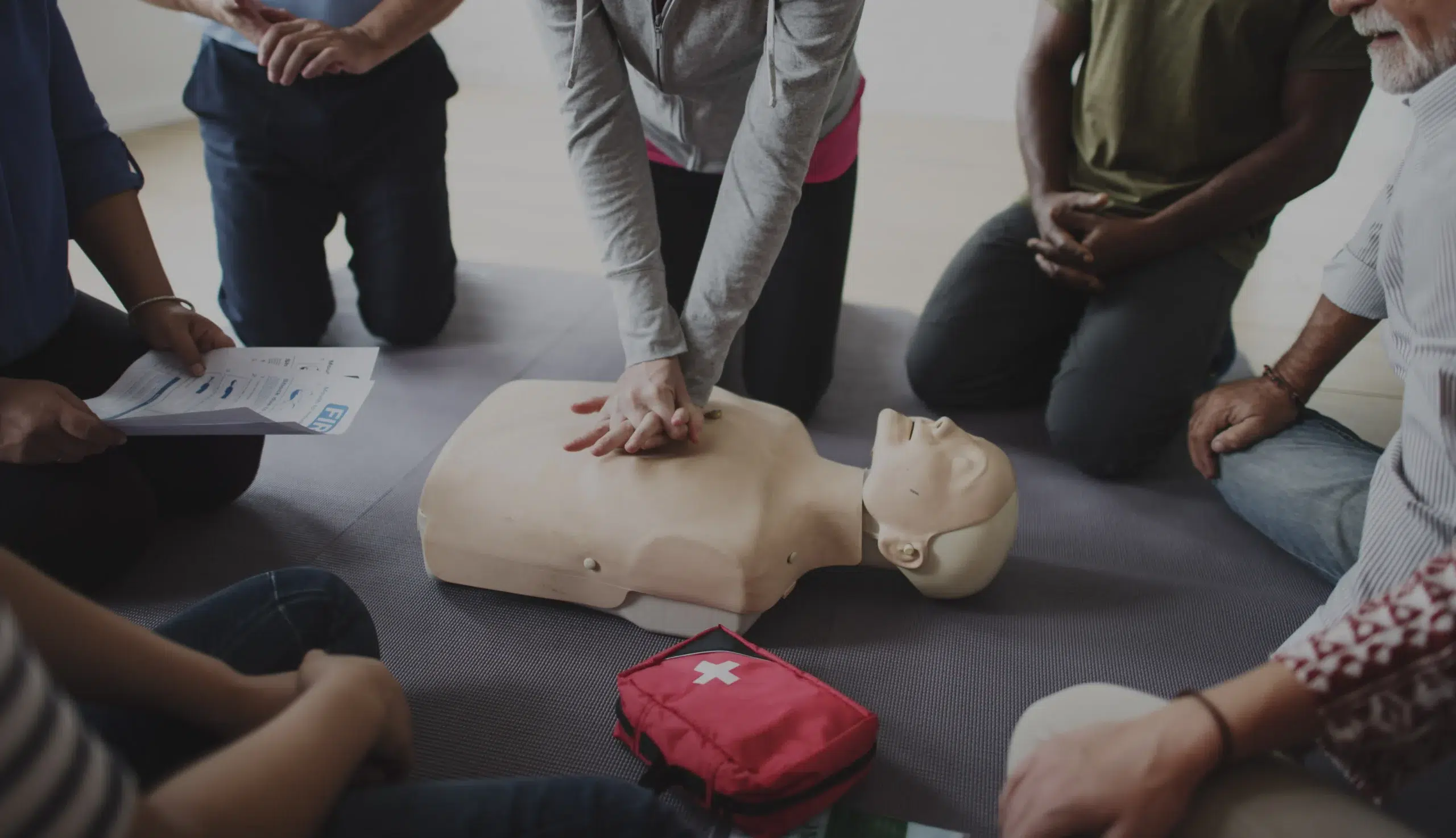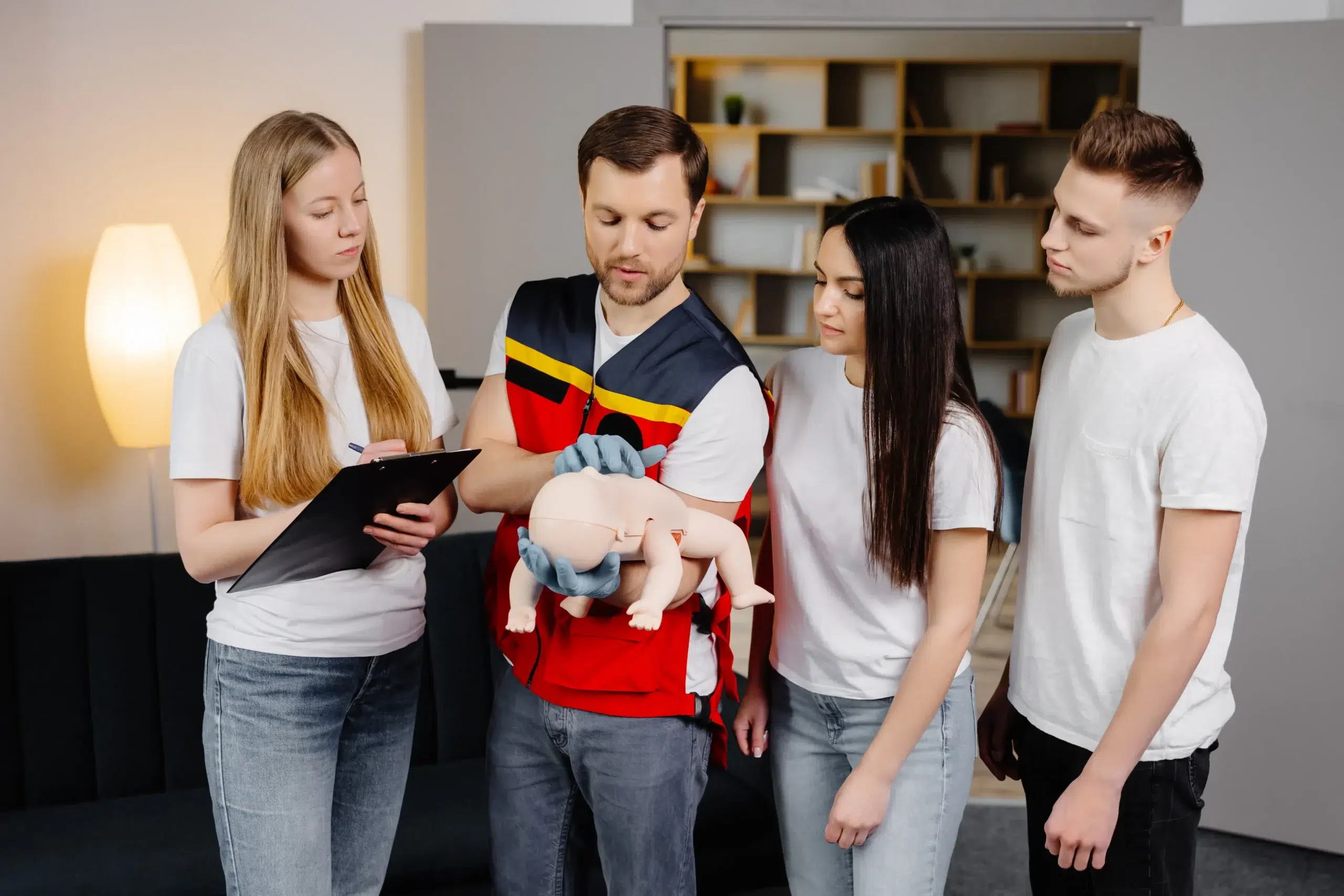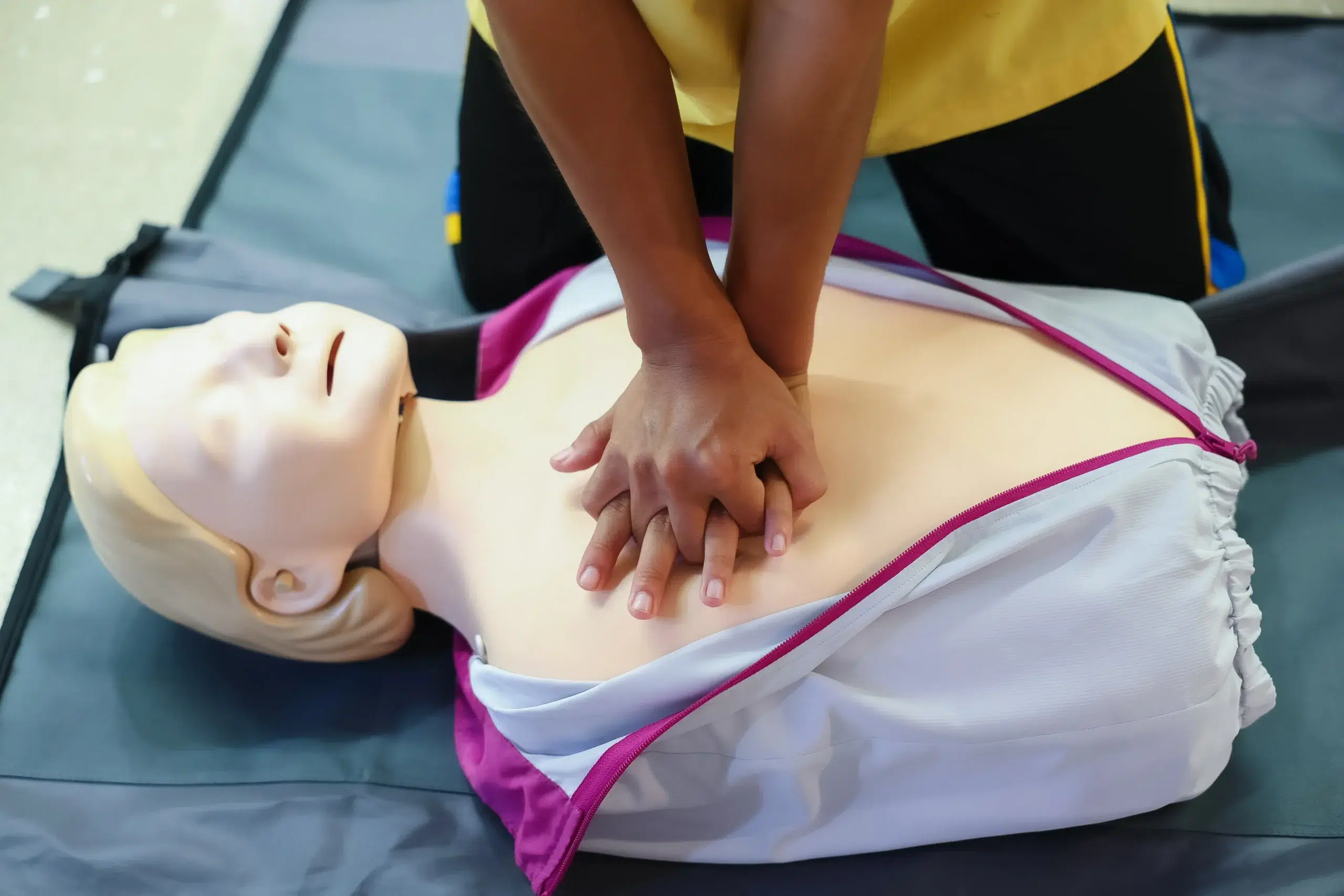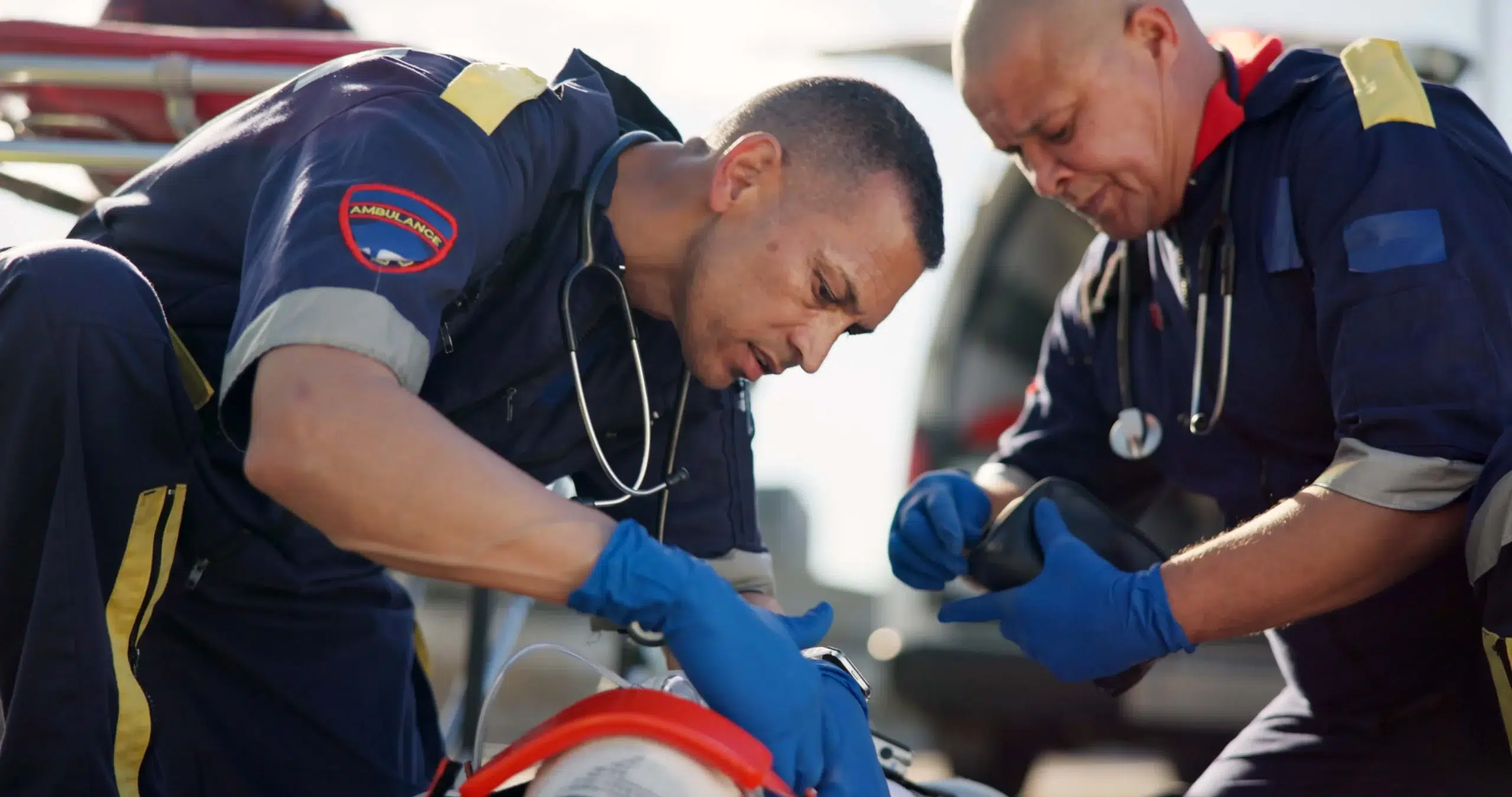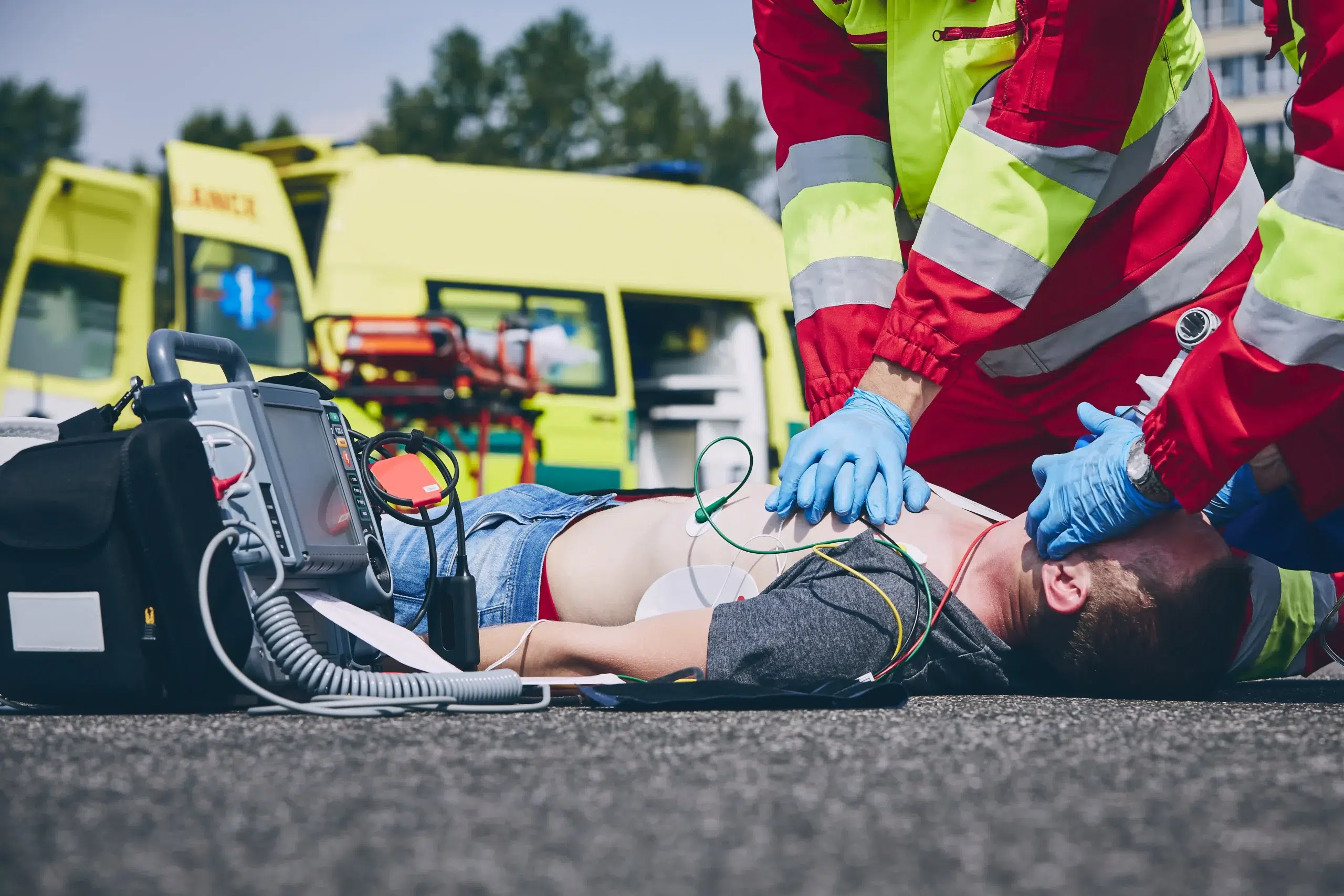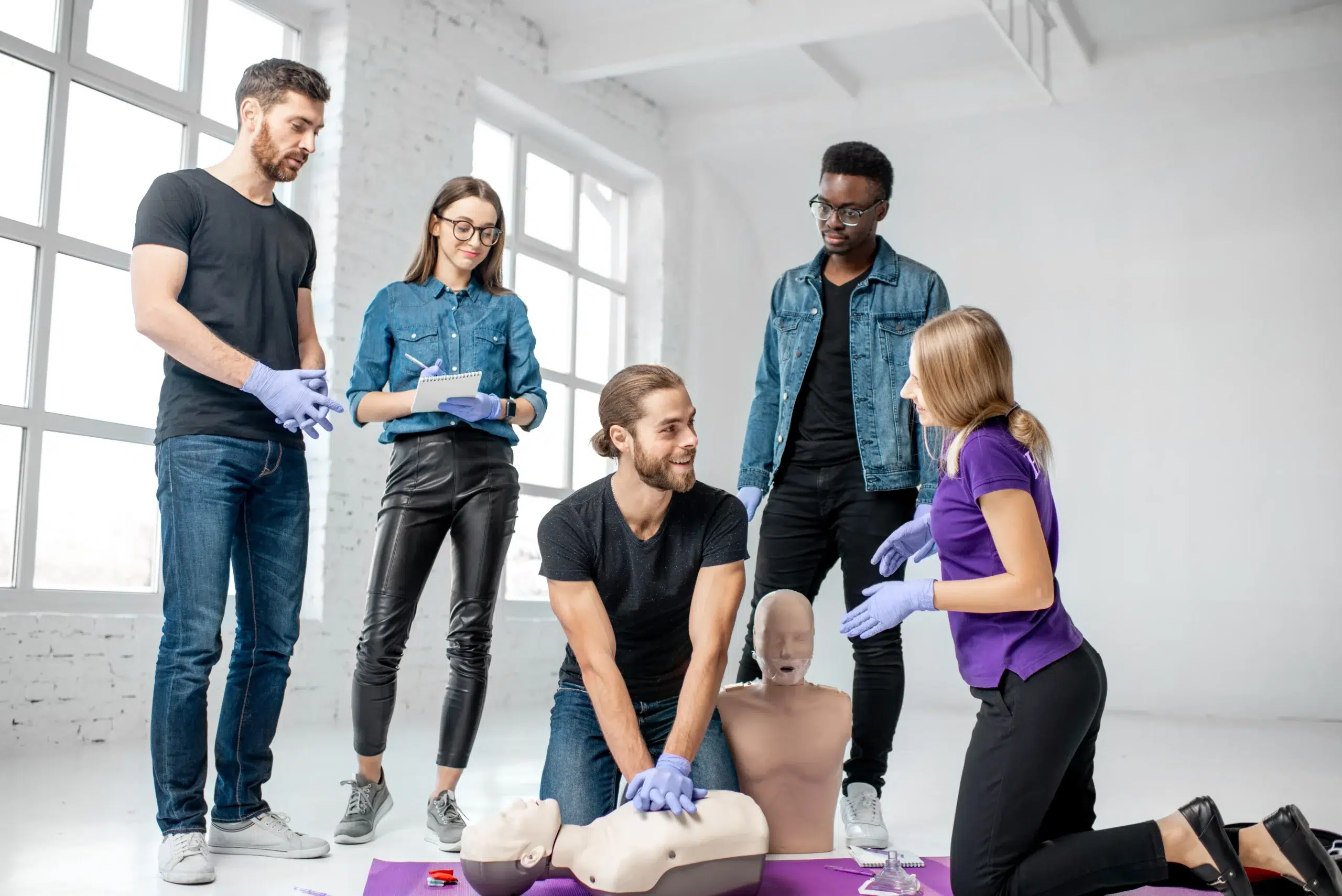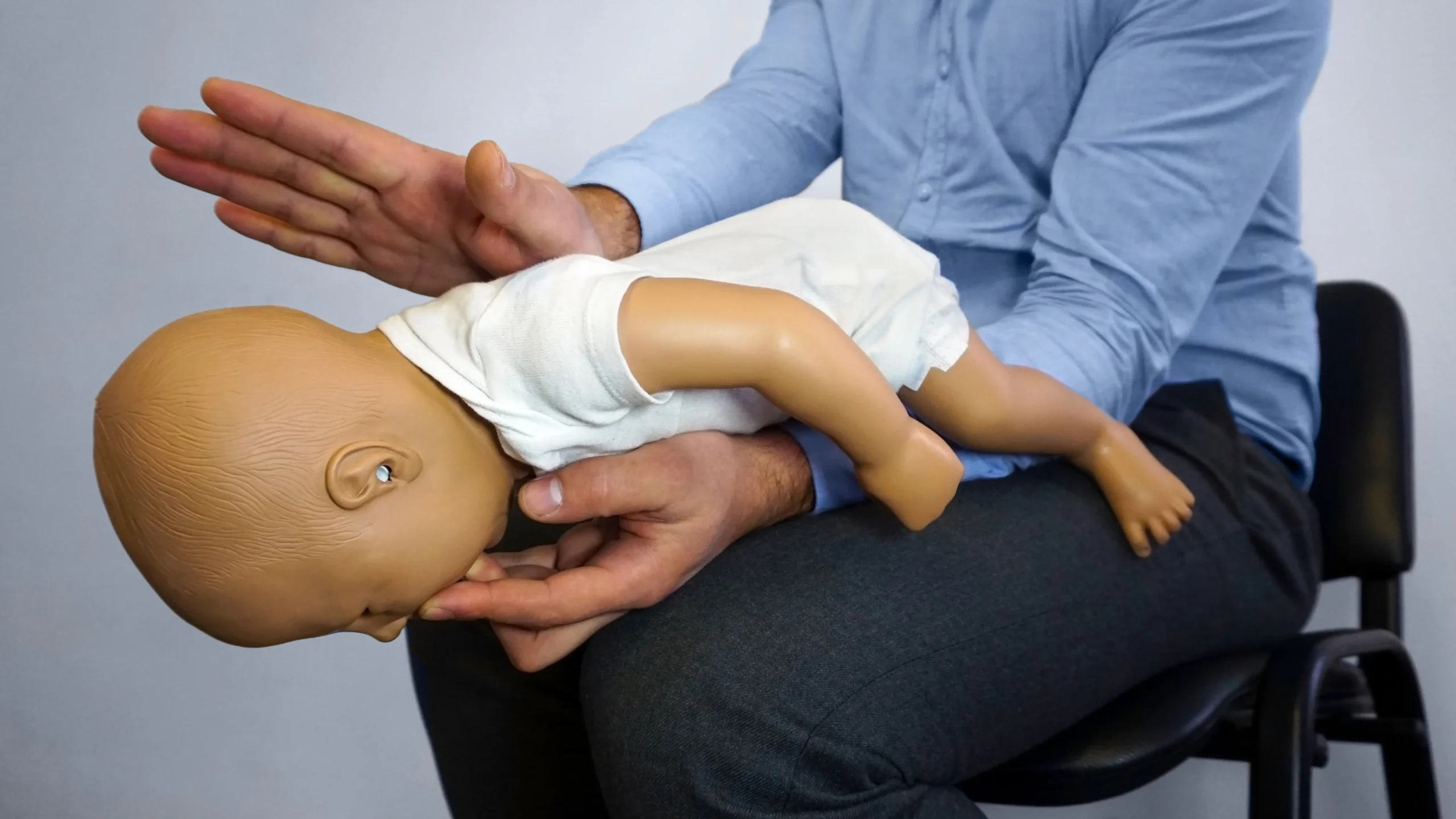Empowering yourself with life-saving skills starts with CPR certification in Fremont. This comprehensive guide will navigate you through the world of CPR certification, providing valuable insights into the different types of certifications, where to find training in Fremont, the costs associated with certification, and what a typical CPR class entails. Whether you’re a healthcare professional seeking BLS or ACLS certification, a childcare provider needing CPR and First Aid training, or simply an individual wanting to be prepared for emergencies, this guide has you covered. We’ll also discuss maintaining your CPR certification and debunk common misconceptions surrounding CPR.
Key Takeaways
- CPR certification provides essential life-saving skills: From basic community courses to advanced professional certifications, CPR training empowers individuals to respond effectively to emergencies. Select the training that aligns with your personal or professional needs.
- Select a reputable training provider: Seek out established providers affiliated with recognized organizations like the American Heart Association. Consider instructor experience, scheduling flexibility, and the use of up-to-date training materials and technology.
- Regularly refresh your CPR skills: Maintain your certification and confidence by taking renewal courses and pursuing continuing education opportunities. Consistent practice ensures you’re always prepared to provide assistance when needed.
What is CPR Certification?
CPR certification formally recognizes that you’ve completed training in cardiopulmonary resuscitation (CPR) techniques. This training gives you the skills to perform CPR effectively in emergencies, providing life-saving assistance until help arrives. BLS) and Advanced Cardiovascular Life Support (ACLS), are designed for healthcare providers and first responders, focusing on both theoretical knowledge and practical skills. This prepares you to handle cardiac emergencies. After completing a CPR course, you receive a certification card, typically valid for two years. This card verifies your CPR proficiency and is essential for many professions, especially in healthcare.
CPR Certification Types
Choosing the right CPR certification depends on your individual needs and career path. Here’s a breakdown of the most common types offered at Safety Training Seminars, serving Fremont, Newark, and San Jose:
Heartsaver CPR/AED
Heartsaver CPR/AED courses are designed for people outside of the healthcare industry who want to learn CPR and how to use an automated external defibrillator (AED). These courses are a great fit for teachers, coaches, parents, and anyone who wants to be prepared for emergencies. This Heartsaver CPR/AED training covers essential life-saving skills for adults, children, and infants.
Basic Life Support (BLS)
The Basic Life Support (BLS) certification is for healthcare providers, such as nurses, paramedics, and other medical professionals. It’s also a good choice for those pursuing a career in healthcare. BLS certification covers CPR for adults, children, and infants, AED use, and other essential skills like rescue breathing and relief of choking. The course emphasizes high-quality CPR and effective team dynamics, both critical in emergencies.
Pediatric First Aid with CPR/AED
If you work with children, the Pediatric First Aid with CPR/AED course is essential. This certification is ideal for childcare providers, teachers, camp counselors, and anyone regularly around kids. It teaches how to respond to common childhood injuries and illnesses, plus CPR and AED use for infants and children. Explore our Pediatric First Aid training options.
Advanced Cardiac Life Support (ACLS)
Advanced Cardiac Life Support (ACLS) is an advanced certification for healthcare professionals who manage cardiovascular emergencies and other respiratory emergencies. This course goes beyond the basics of CPR to cover advanced interventions, airway management, and the treatment of cardiac arrest. ACLS emphasizes teamwork, communication, and critical thinking skills necessary for effective patient care in stressful situations. Contact us to find out more about our ACLS courses.
Where to Get CPR Certified in Fremont
Finding the right CPR certification course can feel overwhelming, but several reputable organizations and training centers offer classes in Fremont. Here’s a breakdown of some popular options:
Safety Training Seminars
Safety Training Seminars is a woman-owned AHA Training Center offering various certification courses, including BLS, ACLS, PALS, CPR, and First Aid. They focus on providing high-quality instruction and convenient schedules, with classes offered daily. For those seeking combined training, they also offer CPR and First Aid classes. They also provide discounts for groups, making them a good option for workplaces needing to certify multiple employees. Their commitment to accessibility is backed by a low price guarantee and extended customer service hours.
American Red Cross
The American Red Cross is a well-known provider of CPR/AED training and certification. While they may not offer the same range of AHA courses as other providers, their CPR/AED certification is widely recognized. Check their website for class schedules and availability in Fremont.
CPR Education
CPR Education offers various CPR training classes in Fremont. They work with individuals at all experience levels, from beginners to healthcare professionals. Courses include American Heart Association Heartsaver, Basic Life Support (BLS), and Pediatric First Aid with CPR/AED. CPR Education is a solid option if you need various courses tailored to different needs.
Fremont CPR Classes
Fremont CPR Classes offers a variety of American Heart Association (AHA) courses, including BLS, ACLS, and First Aid. As a woman-owned business, they prioritize high-quality instruction and convenient scheduling, along with group discounts.
American Heart Association Training Center
While not a specific training provider, training from an official American Heart Association Training Center ensures you’re receiving high-quality, current instruction. Many providers listed above, including Safety Training Seminars, are official AHA Training Centers. Healthcare professionals seeking RQI (Resuscitation Quality Improvement) training can explore the RQI classes offered by Safety Training Seminars. This program provides a streamlined way to maintain your BLS, ACLS, and PALS certifications.
CPR Certification Costs & Value
Getting CPR certified is an investment in yourself and your community. Understanding the costs associated with different certification levels and exploring available discounts can help you find a course that fits your budget.
Average Certification Costs
CPR certification costs vary depending on the type of course and the training provider. Basic CPR and First Aid certification typically starts around $75, while more advanced courses like BLS for healthcare providers can range from $85 to $100. Specialized certifications such as ACLS and PALS usually have higher price points due to the advanced training involved. Check directly with your chosen provider, like Safety Training Seminars, for the most up-to-date pricing. We believe in transparent pricing and strive to offer competitive rates for all our courses, backed by our low price guarantee.
Group Discounts & Special Offers
Many training centers, including Safety Training Seminars, offer discounts for group bookings. This is a great option for workplaces, community groups, or families looking to get certified together. Group discounts reduce the individual cost and allow for a more tailored and convenient training experience. We also frequently run special promotions and offer student discounts, so check our website or contact us to learn about current offers. You can find information about our CPR and First Aid certification courses on our website.
Comparing Costs with Nearby Cities
CPR certification costs can vary between cities, but the difference is often minimal within the same region. The cost of CPR classes in Fremont is generally comparable to the cost in Newark and San Jose. The value of CPR certification remains consistent regardless of location. Learning these lifesaving skills empowers you to respond effectively in emergencies, making it a worthwhile investment wherever you get certified.
Class Duration & Formats
CPR certification courses offer various learning pathways to fit your schedule and preferences. Let’s explore the different class formats and time commitments involved.
In-Person Training
In-person CPR training provides hands-on learning with a certified instructor. These courses meet OSHA requirements and typically result in a two-year certification. You’ll practice techniques on mannequins and receive real-time feedback, building confidence in your abilities. Safety Training Seminars offers in-person BLS courses in Newark that follow this format. For those seeking CPR and First Aid certification, in-person training ensures you receive thorough instruction and practice.
Online & Blended Learning
Online and blended learning options offer flexibility for those with busy schedules. Fully online courses allow you to learn at your own pace, while blended learning combines online modules with in-person skills sessions. It’s important to note that online-only CPR classes do not provide an OSHA-compliant certification. If workplace compliance is necessary, choose an in-person or blended learning format.
Time Commitment for Each Certification
The time commitment for CPR certification varies depending on the course type and the material covered. Basic CPR and First Aid courses can range from a few hours to a full day. More advanced certifications, such as ACLS or PALS, may require a longer time commitment. Check with your chosen training provider, like Safety Training Seminars, for specific course durations. Our CPR and First Aid certification courses typically span one to two days, allowing ample time for comprehensive instruction and practice. We also offer convenient daily classes and discounted group rates to accommodate various needs and budgets.
What Happens in a CPR Class?
CPR classes blend theory and practical skills to prepare you for real-life emergencies. You’ll learn the science behind CPR, why it works, and the steps to perform it correctly. Expect a combination of interactive discussions, instructor demonstrations, and hands-on practice.
Hands-on Practice
CPR classes emphasize hands-on learning. You’ll work extensively with manikins, practicing chest compressions and rescue breaths. This practice builds muscle memory and confidence so you can react effectively in stressful situations. Instructors provide personalized feedback, helping you master the correct techniques and compression depth. They’ll guide you on hand placement, body positioning, and compression rate.
Written Exams
Most CPR certification courses include a written exam covering key concepts like recognizing cardiac arrest, performing CPR, and using an AED. These exams confirm your understanding of the material. Your instructor will prepare you throughout the course, and many providers offer practice tests.
Scenarios & Simulations
CPR classes use scenarios and simulations to prepare you for various emergencies. You might encounter simulated cardiac arrests, choking incidents, or other medical emergencies. This practical application helps you integrate your knowledge and skills, teaching you how to assess situations, make quick decisions, and work as a team. Some advanced courses, like the American Heart Association RQI program, use sophisticated simulations for real-time feedback and reinforcement of best practices. These realistic scenarios build critical thinking skills and confidence for responding effectively in real emergencies.
Who Needs CPR Certification?
CPR certification equips individuals with life-saving skills, making it valuable for various professions and the general public. Let’s explore who can benefit from this training.
Healthcare Professionals
Healthcare providers in Fremont, from doctors and nurses to medical assistants and EMTs, need to maintain current certifications in Basic Life Support (BLS), Advanced Cardiovascular Life Support (ACLS), and Pediatric Advanced Life Support (PALS). These certifications demonstrate a commitment to patient safety and are often a requirement for employment. The American Heart Association RQI (Resuscitation Quality Improvement) program offers a streamlined way for medical professionals to renew their certifications. Our BLS courses in Newark serve the Fremont area.
Childcare Providers
Working with infants and young children means being prepared for anything. For childcare providers, CPR certification is essential. It provides the skills and confidence to respond effectively in emergencies, ensuring the safety and well-being of the children in their care. Our CPR and First-Aid certification courses cover the specific techniques for infants and children.
Teachers & Coaches
Teachers and coaches are often responsible for the safety of students and athletes, both in the classroom and on the field. CPR and First-Aid certification prepares these individuals to handle medical emergencies, from minor injuries to life-threatening situations. Knowing how to respond quickly and effectively can make a critical difference. Learn more about our CPR and First Aid classes.
General Public
CPR training isn’t just for professionals—it’s a valuable skill for everyone. Knowing CPR empowers individuals to act confidently in emergencies, potentially saving the lives of loved ones, strangers, or even pets. Consider taking a CPR class; it’s an investment in your community and your own peace of mind. Check out our low price guarantee to find an affordable option. We also offer discounted group classes if you’d like to learn with friends or family.
Choose the Right CPR Provider
Finding the right CPR provider is crucial for a valuable learning experience. Consider these factors when making your decision:
Accreditation & Reputation
Look for providers affiliated with nationally recognized organizations like the American Heart Association (AHA). A strong reputation within the community speaks volumes. Check online reviews and testimonials to see what past students say. Safety Training Seminars, for example, is known for high-quality, AHA-certified courses, convenient scheduling, and group discounts. This gives you confidence in the quality of instruction.
Instructor Qualifications
Experienced, certified instructors are essential for effective CPR training. Ask about the instructors’ credentials and experience. Safety Training Seminars is an AHA Training Center with qualified professionals dedicated to providing excellent instruction. Knowing your instructor’s background impacts your learning and confidence in performing CPR.
Scheduling Flexibility
CPR training should fit your schedule. Choose a provider with various class times and formats. Flexible options, like those at Fremont CPR Classes, accommodate different learning styles and busy schedules, making it easier to find a class that works for you.
Technology & Training Materials
Up-to-date materials and technology enhance learning. Modern CPR courses often use tools like real-time feedback systems, which provide immediate feedback on your technique, helping you learn proper form and build confidence. Research shows this type of feedback significantly improves skill acquisition and retention. Ask potential providers about their resources to ensure you’re receiving the most effective training.
Maintain Your CPR Certification
Keeping your CPR skills sharp is essential for confidently responding to emergencies. This section covers how to maintain your certification and stay up-to-date with the latest life-saving techniques.
Renewal Requirements
CPR certifications, like those offered by Safety Training Seminars, are typically valid for two years. To maintain your credentials and ensure your skills are current, you’ll need to renew your certification before it expires. Renewal courses cover the latest guidelines and techniques from the American Heart Association. Upon successful completion, you’ll receive an updated certification card, demonstrating your continued proficiency in CPR. This ensures you’re prepared to provide effective assistance when needed.
Continuing Education
Even between renewals, continuing education can be incredibly valuable. The RQI program (Resuscitation Quality Improvement), offered by the American Heart Association, is a great way to stay proficient in BLS, ACLS, and PALS. These courses often emphasize hands-on practice and skill assessment, ensuring you’re not just familiar with the concepts but also comfortable applying them. Staying current with the latest CPR practices through continuing education helps you provide the most effective care during emergencies.
Common CPR Misconceptions
It’s easy to get confused about CPR facts. Let’s clear up some common misconceptions about CPR training and certification.
“Only for Medical Professionals”
CPR is a life skill everyone should have, not just doctors and nurses. Knowing CPR empowers anyone to respond to emergencies like heart attacks, near-drowning incidents, or choking. You could save a loved one, a stranger, or even a pet. Consider CPR training as important as knowing how to drive or swim—it’s a skill that can make a real difference.
“Expired Certification Means You Can’t Help”
An expired CPR certification doesn’t mean your skills vanish. In a crisis, something is always better than nothing. Don’t hesitate to help if you’re the only one available. However, guidelines and best practices do change, so renewing your certification ensures you’re up-to-date and confident in your abilities.
“Online Courses are Sufficient”
Online CPR courses offer a convenient introduction, but they can’t replace hands-on learning. Physical practice with mannequins and feedback from certified instructors are essential for developing the muscle memory and confidence you’ll need in a real emergency. Check with your employer or certifying organization—many require in-person training for official certification.
“CPR is Always Effective”
CPR significantly increases the odds of survival, especially when combined with early defibrillation using an AED. However, it’s not a guaranteed lifesaver. Various factors influence the outcome, including the nature of the emergency and the individual’s underlying health. Even if CPR doesn’t fully restore breathing and heartbeat, it can maintain vital blood flow to the brain and other organs until professional help arrives. Learn more about how CPR works in our CPR and First Aid Certification Courses.
“One-Time Training is Enough”
Like any skill, CPR proficiency improves with practice. Regular refresher courses reinforce best practices, introduce updated guidelines, and boost your confidence. Plus, studies show that ongoing training improves attitudes toward CPR and AED use, making you more likely to act decisively in an emergency. Consider scheduling CPR training every year or two to keep your skills sharp.
Related Articles
- CPR Certification in Newark: Your Complete Guide – Newark CPR Classes
- CPR Certification in San Jose: Your Complete Guide – Newark CPR Classes
- CPR Classes in Fremont: Your Comprehensive Guide – Newark CPR Classes
- NRP Certification Fremont: Your Guide to Local Training – Newark CPR Classes
- Why CPR Is Critical in Saving Lives
Frequently Asked Questions
What’s the difference between BLS and Heartsaver CPR?
BLS (Basic Life Support) certification is designed for healthcare providers and those in healthcare-related fields. It’s more comprehensive than Heartsaver CPR, covering a broader range of skills like team dynamics and using a bag-valve mask. Heartsaver CPR/AED focuses on essential CPR and AED skills for anyone wanting to be prepared for emergencies, even without a medical background. The best choice depends on your current job or career goals.
How do I choose the right CPR class for me?
Think about why you want CPR training. Are you required to have it for work, or do you want to learn for personal reasons? If it’s for your job, check if there are specific requirements. For example, healthcare providers usually need BLS or ACLS. If you’re looking for general knowledge or want to be prepared for emergencies at home, Heartsaver CPR/AED or a combined CPR/First Aid course might be a good fit. Consider your comfort level, too. If you prefer a more hands-on approach, in-person training is best.
How long does CPR certification last, and how do I renew it?
CPR certifications are typically valid for two years. You’ll need to take a renewal course before it expires to stay certified. Check with your certifying organization or employer for specific requirements. Renewal courses ensure your skills and knowledge are up-to-date with the latest guidelines.
What if I need to use CPR and my certification has expired?
Even if your certification has lapsed, don’t hesitate to act in an emergency. Some knowledge is always better than none. Remember the basics of chest compressions and rescue breaths, and do your best to help until professional responders arrive. However, it’s crucial to renew your certification as soon as possible to stay current with the latest techniques and guidelines.
Are online CPR courses accepted everywhere?
While online CPR courses offer a convenient way to learn the basics, they often don’t meet the requirements for workplace certification. Many employers and organizations require in-person training with hands-on practice and evaluation by a certified instructor. Check with your employer or the organization requiring certification to confirm whether online-only courses are acceptable. Blended learning, which combines online modules with in-person skills sessions, is becoming more common and may be an option.
